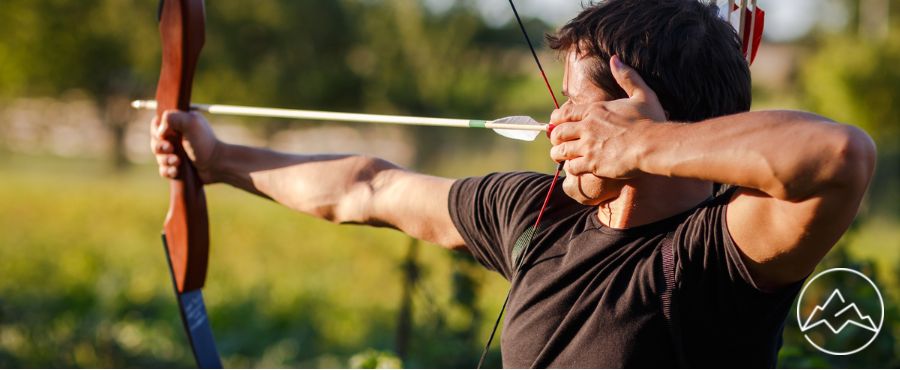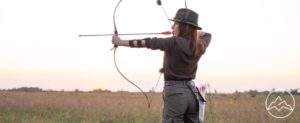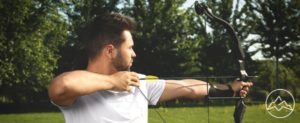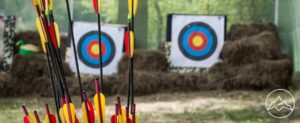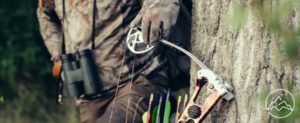If you’re thinking about taking up archery, you’ll have a lot to consider. This is compounded if you’re left-handed – the world is right-hand dominant, and unfortunately, the archery world is no different. One of the first things you should consider is whether or not you need a left-handed bow. We’ll be looking at who needs left-handed bows, followed by some general bow selection tips for beginners.
Do you need a left-handed bow?
It may seem obvious, but you may not need a left-handed bow.
You should consider carefully if that is the case, as left-handed bows are harder to come across, and many hunting bows are only available in right-handed variations, too. New products are always becoming available, but right-handed variations remain more common.
Hand and eye dominance
To establish hand and eye dominance, you’ll need to compare your dominant eye to your handedness. Unless you’re ambidextrous (a minimal amount of the population), you’ll have a dominant hand. You can figure out your eye dominance in several ways, but the easiest way is with a telescope. If you pick up a telescope and put it to your eye, the eye you choose first is the dominant eye most of the time. There are exceptions to this rule, but this is a quick guide.
Generally speaking, your dominant hand is the hand you:
- Eat with
- Drink with
- Write with
- Use your computer mouse with
If you’re right-handed and your dominant eye is the right, you’re right dominant.
Left-eye/dominant right-hand people are cross-dominant (or cross-eye dominant).If you’re right eye/left hand dominant, you’re also cross-dominant.
An ambi-ocular person with left-handedness is partly left dominant. If you’re ambi-ocular and right-handed, you have partial right dominance.If you’re ambi-ocular and ambidextrous, you’re unique. It’s your choice which way you want to shoot.
Cross dominance
If you’re cross-dominant, you can choose to re-train your eye or hand. It’s harder to train your fine motor skills if you’re older, but you can choose to shoot with your non-dominant hand if you’re a young archer.Selecting your bow
Once you’ve worked out whether you need a left-handed bow, you can proceed to buy your first bow. Left-hand compound bows and recurve archery bows are most widely available so we’ll be focused on those, but you can also purchase left-hand youth bows and longbows.
Archery is like anything in life; you get what you pay for. But there are shortcuts that you can make to save money long term.
Don’t get tricked into buying anything more than what you need – plan a budget for what you want to spend (though you should be flexible).You should consider completing a beginner’s course before you choose a bow; this will help you perfect your basic form and decide what specifications you require.
You should consider several factors, including your draw length and preferred draw weight. A standard recurve bow should be roughly your draw length plus 40 inches. There may be different measurements for youth archers.
Riser
The riser is the most significant part of the bow; it’s the foundation from which you’ll build the rest of the bow. If you look after it properly, it’ll last for years. Your budget will control what risers you can buy, but I’d recommend visiting a shop and holding as many as possible to see if you like the balance and feel. Some professional stores will have a range where you can test risers out.Risers can be made from various materials, including wood (traditional bows), metal, or carbon. Each has benefits.
Wooden and carbon risers are light and require extra stabilization. Aluminum risers are more rugged. Wooden bows are more limited and are the choice of traditional archers, but metal and carbon risers are more adaptable, making use of modern technology. You should find a riser with good hand placement, balance, and straightness. Avoid twisted risers.
Limbs
You should consider how you’ll grow and develop as an archer before you choose your limbs. Most use the ILF (international limb fitting) system, barring screw-in and newer Hoyt Formula fittings. You’ll probably outgrow your limbs, and some recommend buying cheaper limbs so that you can purchase a new one if you have a broken or outgrown limb. Most adults start with an 18-25lb poundage. Some stores will offer a rental scheme, so you can try out some limbs, too.
Bowstring
String comes in various types, lengths, and thicknesses to fit any bow. You should ensure that the string is the right length and thickness; thicker strings are required for higher draw weights and fit arrow nocks better.
Brass will shorten the life of your string, so you should consider a tied nocking point. Most professional archers choose simple white string.
Sight
One of the most important parts of your kit is the sight, and you shouldn’t scrimp in this area as cheaper sights come apart and break quickly. Sophisticated sights have better quality, superior materials, and micro-adjustable parts. You should choose something robust and reliable.
Arrow rest and button
Rests are available in various materials, including magnetic, fixed, and plastic varieties. Metal rests are sturdier and don’t require replacement often, but they can be difficult to get used to. Fixed plastic rests may be easier to get used to, but they are flimsier.
Stabilization
Rods balance the bow and reduce vibration, don’t worry about making a significant investment. It’s a good idea to start with longer rods, then add v-bars later. You can also consider additional weights and dampers.
Other kit
Other pieces of kit aren’t strictly required but can make your life easier. Some items to consider include:- Armguard
- Chestguard
- Quiver
- Bow stand
- Arrow puller
- Stringer tool
- String wax
- Bag or tackle box
These additional bits of kit come down to budget and personal preference, but if you’re unsure of what you need/want, be sure to ask a professional at your local archery store.
Stock issues
Over the last few years, left-handed bows have increased in availability, but not all brands cater to them. You may have to trial a right-handed bow and have them order in the left-handed version. Before visiting your local archery store, you should ask them how many left-handed bows and parts they have in stock.
FAQs About Left-Handed Bows
What are the advantages of using a left-handed bow?
How does shooting with a left-handed bow differ from shooting with a right-handed one?
Are there any specific features to look for when buying a left-handed bow?
Are there different types of arrows that work better for left-handed bows than right-handed ones?
What tips or techniques can be used to help improve accuracy while shooting with a left handed bow?
Conclusion
Archery is a great pastime, but if you’re left-handed, you might face some challenges, as most of the world is right-handed. Some bows don’t even come in left-hand varieties; if they do, stores often won’t stock them. Recurve bows are one of the best choices, as they are often takedown bows that can be used for hunting. You could also look into hunting compound bows, but they don’t necessarily have the same variety.
But you may be surprised that you won’t necessarily need a left-handed bow if you’re left-handed. Some shooters prefer to train their non-dominant hand (or eye) to shoot with a right-handed bow. If you need a left-handed bow, you’ll have to follow similar principles to buying a right-handed one; there are no real differences in the buying process outside of availability issues.

